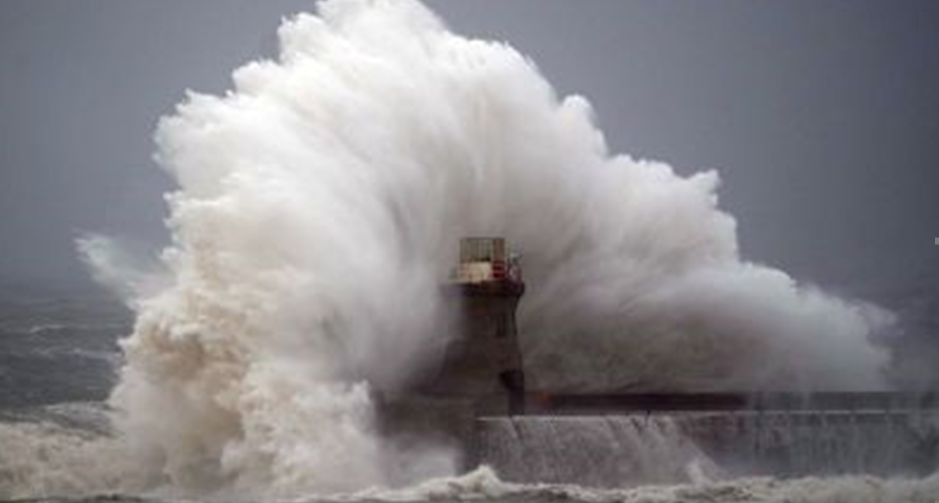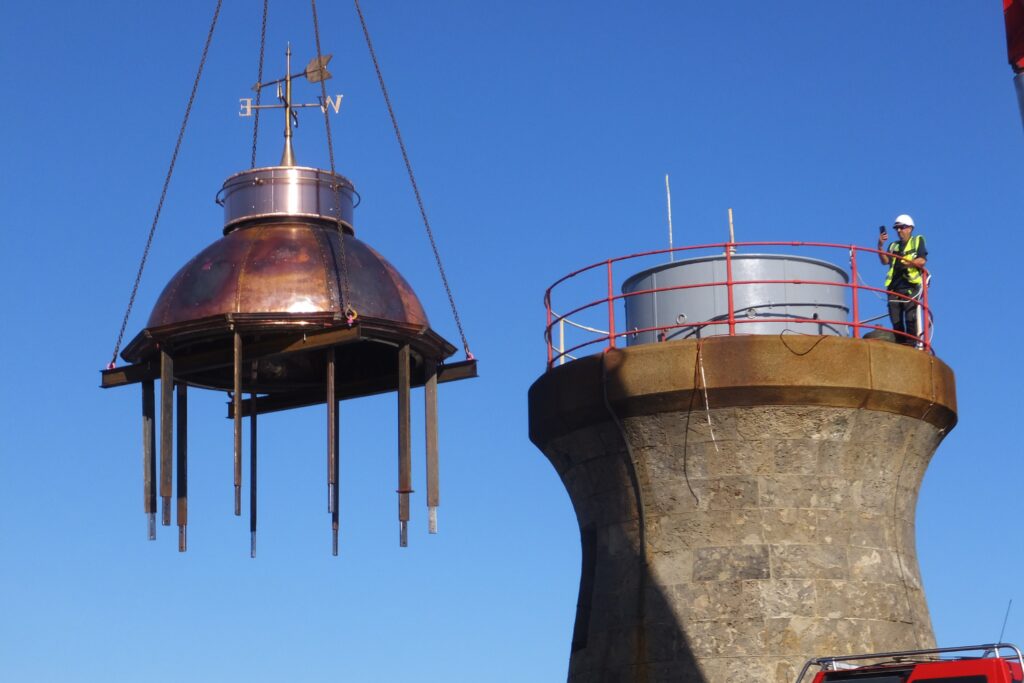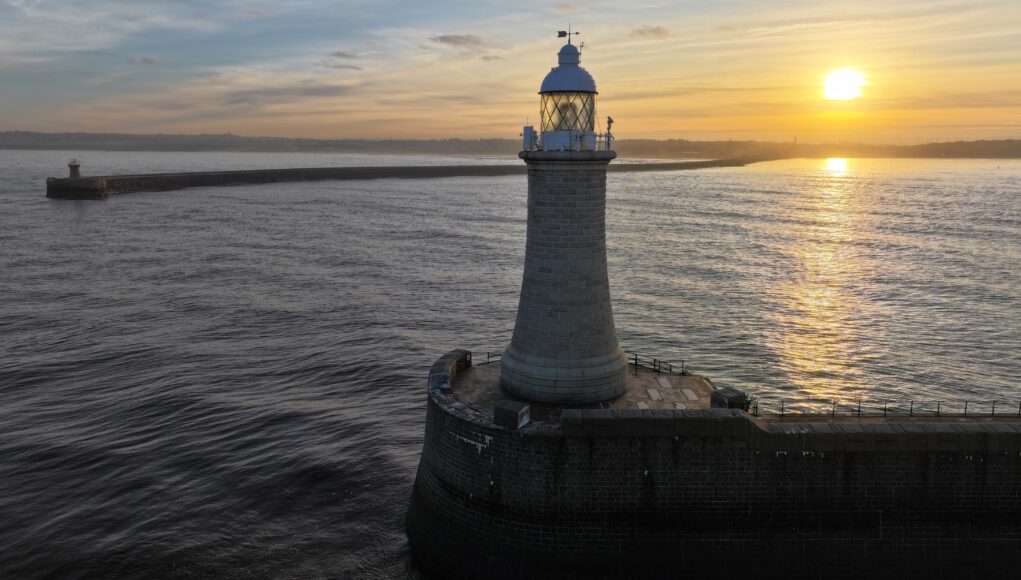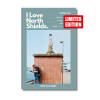By Caroline Oswald
When structural engineer Rob Ratcliffe moved from Scotland to North Shields in 2022, he could not have imagined that he would be faced with the onerous task of reconstructing South Shields Lighthouse. The historic landmark of the Tyne was an unfortunate casualty of the combination of high winds, high tide and substantial swell during Storm Babet in October 2023. Rob shared with us an insight into the effects of the storm and the complicated process of repairing the damage.

South Shields Lighthouse was one of the finishing touches to the 1855-1907 construction of the North and South Piers, which guide and shelter the many boats that enter the mouth of the River Tyne. This original process consumed the full career of an initially fresh-faced and enthusiastic site manager, involving the collapse and reconstruction of a section of the North Pier and the patent design of a concrete mixer.
The construction of both lighthouses was comparatively straightforward. The South was short and stout in stature, its arcing limestone walls capped with granite and its upper structure featuring a copper-clad, cast-iron body with glazed windows to allow its Fresnel lens to send out light to incoming boats. The entire structure was pinned down onto the walls with concealed rods and visible wrought-iron guys around its perimeter.
With a structure and roof of inherently strong shape, aerodynamic to cope with the severe weather conditions, the lighthouse had weathered many a storm. However, over the course of three days, Storm Babet bombarded the mouth of the Tyne with easterly wind speed gusts up to 70 knots and an average wind speed of 57 knots. Wave heights were recorded up to 9 metres with a constant wave action of 7 metres.

These relentless forces caused a large extent of damage. From the initial assessment of the lighthouse, a substantial portion of its structure remained in place and in satisfactory condition, its limestone walls sound and its cast-iron dwarf walls and balusters intact. The clear and obvious issues, to name a few, related to the missing domed roof, corrosion to its metalwork and the loss of the majority of its curved window panes. Interestingly, one window, complete with a bullet-hole wound, still remained to the west side.
With several parts of the lighthouse lost, in the case of the domed roof we literally had no starting point when it came to planning its replacement. The South Shields architect therefore set upon the careful task of filling in the information gap to piece the missing parts of the jigsaw together. This involved the inspection of similar lighthouses to understand their construction form in consultation with Trinity House, delving into the Tyne and Wear archives, as well as undertaking a measured survey of the structure that remained. As a result of these efforts, we gained a good understanding of how the domed roof was formed. Also, with the fortune of parts washing up and being recovered during the design process, we were well on our way to an effective design.
Through close collaboration between the architect, metalwork specialist, Port of Tyne and myself, we established the principles of repair and conservation, i.e. to replace and repair in a like-for-like manner. However, where we could make small tweaks and improvements, we would do so. Therefore, the new castings that we formed to create the rib cage structure were made from ductile cast iron, which is very effective in both compression and tension. It was fortunate that we could now benefit from this material which was invented after the construction of the lighthouse, and it could also be cast to take the same form as the original ribs. I looked at the various sizes and connections of components that made up the domed roof, ensuring that these could all cope with the forces of the increasingly intense storms that are likely in the future due to climate change. The South Shields Lighthouse is however a very strong rigid shape and what was designed is perfectly capable of withstanding the forces thrown at it by the elements in this exposed position.
The construction of the upper portion of the lighthouse took place in the metalwork specialist’s workshop. This allowed for a controlled environment and for the entire structure to be put together as a ‘dry fit‘. The original mullions which sit between the curved glass panels were reusable, therefore they were simply cleaned and repainted with the other castings bolt fixed onto these to create a framework. The 2mm thick copper cladding was altogether a trickier element. This was formed in cold rolled copper, which is inherently a very rigid material, and it needed to be rolled in two axes with an English roller to create the right curvature of the dome. To cap the domed roof, a new ventilator drum was formed in copper, complete with a light steel stiffening frame and finally a new weather vane.
With the upper section of the lighthouse essentially constructed and put together in the workshop, it just had to be transported to the Southern pier and then lifted into place. This was not as simple as it sounds, as the mullion legs of the assembled frame had to fit into their slots within the lighthouse’s dwarf wall, so there was very little margin for error. To make sure nothing moved whilst the frame was in transit, the metalworkers created a steel framework which braced it together, also using the eye bolts for the guys to strap it down.
Fortunately, it arrived safely at the northern tip of the Southern Pier on the 3rd of October 2024, on a clear day with just a touch of a breeze. Conditions were perfect and the crane made minimal fuss in hoisting the structure into position. With a small number of adjustments and a bit of manpower, the mullion legs slotted back into their rightful position and the operation was declared a success.
In the time following the day of the lift, glazing and stainless steel were installed and the metal elements have been cleaned and redecorated to cope with the marine environment. It was a pleasure to have played a part in the repair and restoration of the Grade II listed South Pier Lighthouse, a unique experience I will never forget as I look out over the mouth of the Tyne from my new home town of North Shields.
Rob will face a new kind of challenge in the coming year after the arrival of his first baby at Christmas. We wish him and his wife Lin all the best for their new beginning by the sea!














